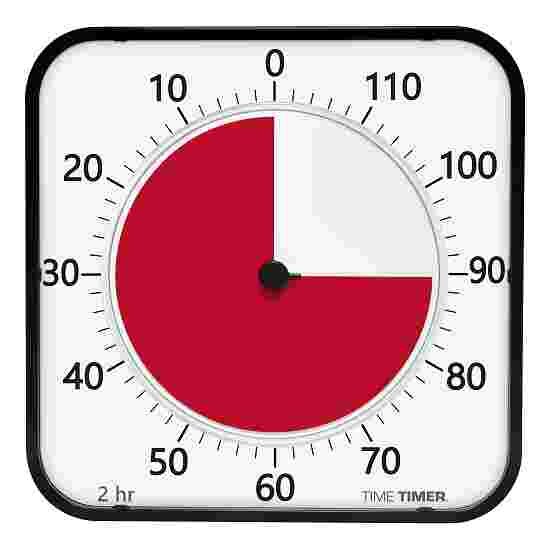Waiting
Let’s face it, we live in an instant gratification society. I can order dinner from my phone and have it at the door in 30 minutes without even having to speak to someone. I can order practically anything I want or need and have it in my hands the next day with very little effort. We can even watch brand new movies from the comfort of our own home the day that they are released. We are a society that has gotten very good at making things happen quickly.
Our kids are no different, new games can be downloaded to tablets or to gaming consoles the day they are released, no need to reserve it early and go pick it up from the store. The concept of waiting is becoming more and more elusive to our children, and the “are we there yet” and the “is dinner ready yet?” questions can wear down on a parent who is already pretty worn down by the end of the day.
Enter: waiting. Waiting is a social skill that needs to be taught and practiced in order to be improved. What can we expect out of our children when we ask them to wait? First, consider age and functioning level. The rule-of-thumb for time out is one minute per year of age, we shouldn’t expect our children to wait much longer than that without finding something else to occupy their time. This means your four-year-old shouldn’t be expected to wait for something for longer than 4 minutes.
How can we teach children to wait? Here are some helpful tips:
Teach the meaning of wait
While the word “wait” may be a four-letter word to some, with most children we need to teach them that “wait” does not mean “no”. Many parents will use these two words interchangeably hoping that while our children are waiting, they find something else to do and forget about the thing they were originally waiting for. While this may work in the moment, in the long run it can be problematic when we really do need our children to wait. Practice waiting by saying the word “wait” seconds before giving them the item they asked for. By pairing these two things together, your child will learn that wait does not mean no, it means they will get it soon. Your tone of voice matters as well, always deliver the instruction “wait” with a positive tone, but don’t ask them to wait, tell them. The difference between “I need you to wait” and “can you please wait?” is the opportunity for your child to say “no”, don’t fall in to that trap, it’s a messy one.
Behavior-specific praise
I’m all about behavior-specific praise. When we name the behavior we are reinforcing, we are more likely to see that behavior again in the future. This goes for everything, but works with waiting as well. “Great waiting!” or “thank you for waiting” are great things to say as we give our child the thing they asked for. Additionally, always follow through. If you tell them they can have the ipad as soon as the timer goes off, be sure to deliver on that promise, don’t give it 1 minute after the timer goes off.
Visual Cues
Visual cues can be very helpful for young children or people with disabilities who have a hard time understanding verbal directions. Timers can be very helpful, some timers have a visual of time passing (see below) so children can have a concrete representation of time and see it going away, or you can set a timer and state “when the timer goes off you can have the iPad”.
First-then visual cues use the Premack Principle (ABA nerd term) that a more probable behavior will reinforce a less probable behavior. First we do the thing we don’t want to do, then we get the thing we want. You can use a visual cue or just the words “First we take a bath, then we watch cartoons”. The key here is to minimize the amount of words used, don’t confuse them with information they don’t need. “Listen buddy I know you want to watch your cartoons but you had a very long day playing outside and you’re pretty dirty, and bedtime is in 30 minutes so let’s just take a bath before you watch your cartoons”.
Independent Play
The ability to “find something to do” while we wait is a skill that needs to be taught to our young ones. Starting small, and giving clear directions, introduce your child to independent play. Clear directions could include “While you wait why don’t you play with your puzzles?”, offering your child an example of what that independent play entails.
Do not rely on technology. While handing your phone or tablet to them can help to keep them entertained while waiting, this can backfire in the long run. If we rely on technology to keep our children entertained, they are missing out on opportunities to learn how to entertain themselves, communicate, focus, and play interactively with others.
Be prepared, set them up for waiting success by preparing a “wait bag” while you are out in public, or by setting up an independent work system in the home to expand their ability to practice independence. See my post on independent work systems here.
Waiting in Public
It can be hard to wait in lines at the grocery store or wait in a doctor’s office until it is time to go in to the treatment room. Playing games with your child can help to occupy their brain while they wait. I’m sure you played games in the car as a child before the invention of phones and tablets like I did, right? We would search license plates for the letters of the alphabet, starting with A and moving through to Z. We would play “I spy” for things we saw on the road, or chant a silly rhyme while sitting at traffic lights:
“Hocus Pocus Sillyocus make this light turn green before I count to 3! 1! 2! 3!”
This is also a great opportunity to teach counting to 3 in different languages, declare that this light must speak Spanish, let’s count to 3 in Spanish!
The feature, function, class game is also a great time filling game. The players all decide on a feature (part of the item), function (thing that item does), or class (category that item falls in to), and the first person to find 5, or 10, or 20 of them wins and gets to decide the next game. This is great for kids of all ages and can be adjusted to their developmental level as needed.
Waiting to Interrupt
“Mom! Mom! Mommy! Mommmyyyyyy!” Waiting to speak while adults are speaking seems to be one of the hardest versions of waiting there is. Allison Hendrix, genius mom, came up with the Interrupt Rule for her children. When they need to interrupt when adults are speaking they place their hand on the adult’s arm or shoulder, and the adult places their hand over the child’s hand. This is a nonverbal way of communicating to the child that they have been “heard” and that they will be attended to as soon as possible.
Waiting for Events
This strategy comes from my own childhood. When waiting for a holiday or a trip or a birthday, time is an abstract and a week can feel like a year to a child. Paper chains are a great way to mark the passage of time and quantify how long the wait actually is. Cut strips from a piece of paper (colorful construction paper is a plus) and tape them in to a loop and form in to a chain with the number of loops signifying the number of days to the event. The child gets to tear off a piece of paper every day, getting closer to the event. It worked on me when I was a child, and is a big hit with my 5 year old!
Teaching a child how to wait is a big and ongoing task but the end result is increased patience in your child, and increased peace for you. As in everything with parenting, we put in the work now for a bigger pay off later. (Case in point, toilet training). If you need any help teaching your child how to wait, we are here for you!







